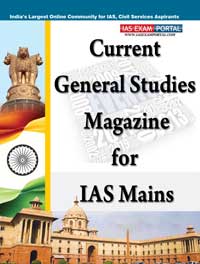
Current General Studies Magazine (June 2016)
General Studies - II "International Relations Based Article" (India’s Relations with its SAARC Neighbourhood : Perceptions & Realities)
Origins of SAARC:
Seven countries, namely, Bangladesh, Bhutan, India, Maldives, Nepal, Pakistan and Sri Lanka, comprise a distinct geographical identity described as South Asia, which accounts for 3% of world area and 23% of world’s population; these seven countries share a long history of geographic, ethnic, cultural, linguistic and religious links.
Sporadic efforts were made to bring South Asia under one regional umbrella and to impart a distinct South Asian identity. Eventually, at the initiative of the then President of Bangladesh Ziaur Rehman , supported by Bhutan, Maldives, Nepal and Sri Lanka, a regional organisation called South Asian Association for Regional Cooperation was launched in Dhaka on 8th December 1985, when its first Summit attended by Heads of State and Government from the seven member countries, was held. Subsequently, several years later, after prolonged deliberations, Afghanistan was admitted into SAARC as its eighth Member in April 2007. Interestingly, Initially, India and Pakistan- each for its own reasons- had reservations. The perception in India was that the small nations in the neighbourhood wanted to create a platform which they could use to gang –up against India. Whereas Pakistan thought India would use the forum to lobby its neighbours against her.
The primary objective of the SAARC, as ultimately agreed upon between the participating nations, was to promote regional economic, social and cultural cooperation as well as cooperation in the field of science and technology. It was consciously decided that "Bilateral and contentious issues shall be excluded from the deliberations”. (Article 10 of the SAARC Charter)
SAARC has now been in existence for three decades. Eighteen Summit Level meetings have been held. Some notable landmarks have been achieved; these include for instance SAARC Development Fund, South Asian University, SAARC Food Bank to supplement national efforts in times of crises, and SAARC Disaster Management Centre to assist each other in case of calamities and natural disasters. These by themselves are all laudable steps. Yet it is considered that there is a huge gap between the Declarations and Concrete action. This is true in particular on the issue of regional integration and economic union. In this context, It is pertinent to note that while South Asia may have made significant progress in integrating with the global economy, integration within the region has remained limited. South Asian countries have maintained a higher level of protection within the region than with the rest of the world. Restrictive policies within the region have neutralized to great extent the potential for benefits which could be derived from geographical proximity and common historical and cultural affinity. Despite SAFTA (South Asia Free Trade Agreement) signed in January 2004, the Intra-region trade is only 5% of total trade which is very low when compared with other regions such as Southeast Asia (25%) and East Asia (35%). There is little cross border investment within South Asia.
The South Asian region has been described as the least integrated region in the world. Reasons are many and varied. Primarily these include intra-region conflicts , including strained relations between India and Pakistan, overall trust deficit, lack of land, air and sea connectivity , unfounded fear that the intra-SAARC trade is about competition whereas in reality it is intended to complement.